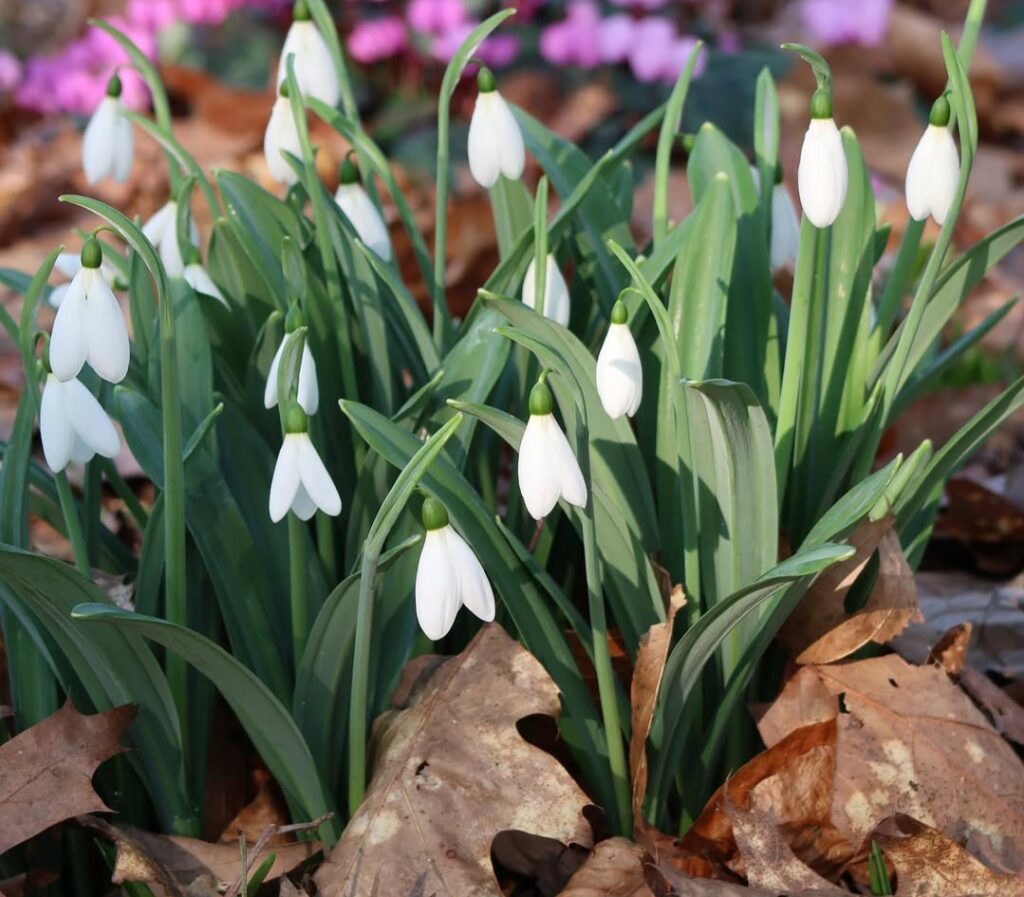6 Best Tips: Why Are Your Palm Plant Leaves Turning Brown and How to Fix It
Palm plants are popular choices for indoor and outdoor spaces, adding a touch of tropical elegance to any environment. However, if you’ve noticed that the leaves of your palm plant are turning brown, it can be a cause for concern. In this blog post, we’ll explore some common reasons behind this issue and provide practical tips on how to revive your palm and restore its vibrant greenery.
Overwatering or Underwatering:
Overwatering and underwatering are common culprits when it comes to the browning of palm plant leaves. Overwatering can lead to root rot, causing the leaves to turn brown and become mushy. On the other hand, underwatering results in dehydration, leading to brown and crispy edges on the leaves.
To determine the watering needs of your palm, check the moisture level in the soil. Insert your finger up to one inch into the ground.At this depth, if it feels dry, moisten it. However, if it still feels moist, it’s best to wait before watering again.
Remember that different palm species may have varying water requirements, so understanding the specific needs of your plant is crucial. Adjust your watering routine accordingly, ensuring a balance between keeping the soil consistently moist and allowing it to dry out slightly between waterings.
Proper drainage is also essential. Ensure that your pot has drainage holes to prevent water from pooling at the bottom, which can contribute to overwatering. If too much water builds up in the saucer underneath the pot, always empty it.
By maintaining a balanced watering schedule and providing adequate drainage, you can address the issues associated with overwatering and underwatering, promoting healthier and greener palm plant leaves.

Inadequate Light:
Inadequate light is a common factor contributing to the browning of palm plant leaves. Palms generally thrive in bright, indirect sunlight, and insufficient light can lead to reduced photosynthesis and the development of brown or yellowish leaves.
To address this issue:
Evaluate Light Conditions:
Assess the current location of your palm plant. If it’s not receiving enough light, consider moving it to a spot with brighter, indirect sunlight. However, be cautious of exposing it to direct sunlight, especially if it’s a species that prefers filtered light.
Adjust Placement:
Place your palm near a window that provides ample natural light, but ensure it’s shielded from harsh, direct sunlight. Some palm species can tolerate lower light levels, so choose a location that suits the specific needs of your plant.
Rotate the Plant:
Rotate your palm occasionally to ensure that all sides receive an even amount of light. This helps promote balanced growth and prevents one side of the plant from becoming stressed or discolored.
Supplement with Artificial Light:
In situations where natural light is limited, consider supplementing with artificial light. Use fluorescent or LED grow lights designed for plants to provide additional illumination during darker periods of the day.
Remember to monitor your palm’s response to the adjusted light conditions. With proper exposure to light, you can help your palm plant regain its vibrancy and reduce the occurrence of brown leaves
Poor Soil Quality:
Poor soil quality can contribute to the browning of palm plant leaves, affecting the overall health of the plant. Palms grow well in well-draining, organic matter-rich soil. If the soil is too heavy or compacted, it can lead to waterlogged roots, nutrient deficiencies, and ultimately, browning leaves.
Here’s how to address poor soil quality:
Repotting:
Consider repotting your palm plant using a well-draining potting mix specifically formulated for tropical plants. To avoid water buildup at the bottom, select a container with drainage holes.
Soil Aeration:
Ensure that the soil provides adequate aeration for the roots. Compacted soil restricts the movement of air and water, adversely affecting root health. Loosen the soil gently when repotting to promote better aeration.
Organic Matter:
Enhance the soil with organic matter such as peat moss or well-rotted compost. This improves soil structure, water retention, and nutrient availability for the palm plant.
Mulching:
Apply a layer of organic mulch around the base of the plant to regulate soil temperature and moisture. Mulching also contributes to the improvement of soil structure over time.
Regularly monitor the moisture levels in the soil and adjust your watering routine accordingly. By providing your palm with a well-draining and nutrient-rich environment, you can mitigate the effects of poor soil quality and promote healthier, green foliage.
Humidity Levels:
Humidity levels play a crucial role in the health of palm plants, and improper humidity can lead to the browning of leaves. Palms generally thrive in humid environments, and low humidity can cause the edges or tips of the leaves to turn brown.
Here are steps to address humidity-related issues:
Misting:
Regularly mist the leaves with water to increase humidity around the plant. This mimics the tropical conditions that many palm species prefer. However, avoid excessive misting, as it can lead to fungal issues if the leaves remain wet for too long.
Grouping Plants:
Cluster your palm plants together. Grouping plants can create a microclimate with higher humidity as plants release moisture through a process called transpiration.
Humidity Trays:
Place humidity trays filled with water near your palm plants. As the water evaporates, it raises the humidity in the immediate vicinity of the plants. Ensure that the bottom of the pots is above the waterline to prevent root rot.
Room Humidifiers:
Use a room humidifier to maintain consistent humidity levels, especially in dry indoor environments. This is particularly beneficial during the winter months when indoor heating systems can reduce humidity.
By addressing humidity levels and creating a more tropical environment, you can help prevent the browning of palm plant leaves and encourage healthier growth. Regular monitoring and adjustments will contribute to the overall well-being of your palm.
Nutrient Deficiency:
Nutrient deficiency is a common factor contributing to the browning of palm plant leaves. Essential nutrients, such as magnesium and potassium, are vital for the proper growth and development of palms. If your palm is lacking these nutrients, it may exhibit signs of stress, including brown or yellowing leaves.
To address nutrient deficiency:
Fertilization:
Apply a balanced, slow-release fertilizer formulated for palm plants. Choose a fertilizer with an NPK (nitrogen, phosphorus, potassium) ratio suitable for palms. Follow the recommended application rates, and avoid over-fertilizing, as this can lead to salt buildup and further damage.
Micronutrient Supplements:
If specific micronutrients like magnesium or iron are deficient, consider using micronutrient supplements. These are available in various forms, including foliar sprays or soil amendments.
Soil Testing:
Conduct a soil test to determine the nutrient levels in the soil. This can help identify specific deficiencies and guide your fertilization strategy. Soil testing kits are available, or you can consult with a local garden center for professional testing.
Organic Amendments:
Improve the overall nutrient content of the soil by incorporating well-rotted compost or organic matter during the growing season. This provides a slow-release source of nutrients for your palm.
Remember to fertilize your palm during the growing season, typically spring and summer, and reduce or withhold fertilizer during the dormant or slow-growth periods in fall and winter. Proper nutrient management will support the overall health of your palm plant, reducing the likelihood of browning leaves.
Pests and Diseases:
Pests and diseases can contribute to the browning of palm plant leaves. Common pests, such as spider mites, scale, and aphids, can sap the plant of nutrients, leading to discoloration. Additionally, fungal infections and diseases can manifest as brown spots or streaks on the leaves.
Here’s how to address pests and diseases:
Inspect Regularly:
Regularly inspect your palm for signs of pests or diseases. Check both the upper and lower surfaces of the leaves, as well as the stems and soil around the plant.
Insecticidal Soap or Neem Oil:
If pests are present, treat your palm with insecticidal soap or neem oil. These natural remedies are effective against a variety of pests and are less harmful to the plant than chemical pesticides.
Pruning:
Prune affected leaves to remove pests or areas with fungal infections. Employ hygienic, well-maintained shears to stop the transmission of illnesses. Dispose of pruned material properly.
Fungicides:
If your palm is affected by fungal diseases, consider using fungicides. Follow the product instructions carefully and apply the fungicide as directed.
Isolation:
Isolate any infected palms to prevent the spread of pests or diseases to other plants. This is crucial for maintaining the overall health of your plant collection.
Cultural Practices:
Maintain good cultural practices, including proper spacing between plants, adequate ventilation, and avoiding overcrowding. These practices help create an environment less favorable for pests and diseases.
By addressing pest and disease issues promptly, you can prevent further damage and promote the recovery of your palm plant. Regular monitoring is key to identifying problems early and implementing effective solutions.
FAQ
Why are my palm plant leaves turning brown?
Brown palm leaves can result from various factors, including overwatering, underwatering, inadequate light, or nutrient deficiencies. It’s crucial to assess your watering routine, ensure proper sunlight exposure, and consider fertilizing to address potential nutrient issues.
How can I determine if my palm plant is overwatered or underwatered?
Stick your finger into the soil to determine the moisture content. If it seems damp all the time, you might be overwatering.Conversely, if it’s dry several inches down, you might be underwatering. Adjust your watering frequency accordingly to maintain a balanced moisture level for your palm
What role does sunlight play in preventing brown palm leaves?
Palm plants generally thrive in bright, indirect light. Insufficient light can lead to browning. Ensure your palm receives adequate sunlight, but avoid direct exposure to harsh afternoon sun. Adjust the plant’s location to provide the right balance of light for optimal health.
How do I address nutrient deficiencies causing brown leaves?
Brown leaves can indicate a lack of essential nutrients. Consider using a balanced, water-soluble fertilizer designed for palm plants. Follow recommended application rates, and fertilize during the growing season. This helps ensure your palm receives the necessary nutrients to maintain vibrant, green foliage.




